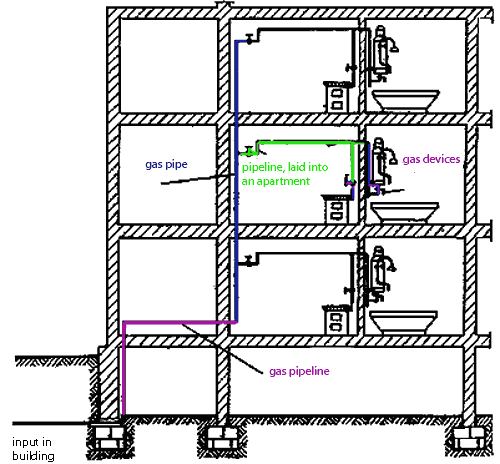rus ua eng links report of search library individual work
Relevance.
An analysis of accidents on gas pipelines in Russia for the period 1992-2005 shows that 7% of total accidents occur as a result of accidental pressure raise after MDS, with space and time coincidence of three random events: pressure regulator failure at MDS; failure of instant clipper; failure of waste valve. In this case, gas under great pressure erupts from apartmentĺs gas stoves and with the concentration of methane in the air from 4.5 to 16% fulminate mixture is formed capable for self-firing.
Therefore, simulation of such accidents and development of organizational and technical recommendations to prevent similar situations is relevant scientific task that ensure explosion safety of housing complex of Ukraine.
Recommendations development that ensures explosion safety of residential apartments at normalizing level by industry legal documents.
To achieve this goal must be resolved following task:
- development of mathematical model of the domestic gas explosion occurrence in the apartments.
New time-frequency dependencies of explosions probability in residential apartments from number of pressure regulator failures on the MDS, duration of the of high pressure gas expiration, test period and waste valve reliability are obtained.
Were developed principles of explosion safety of residential apartments, which allows to set up reliability standard for gas equipment and its test period to achieve the standard level of explosion safety.
Internal pipeline network consists of its building inputs, risers and internal distributive apartment network.

Building input includes the following elements: a pipeline; steel pipe jacket or case putted on a gas pipeline at the point where it passes through the outer wall or foundation; disconnect device - a crane. Inputĺs occurrence depth for dry gas should be 600-800 mm, while for wet - no less than 800 mm.
At a gas input section with jacket should not be welds.
There are some other variants of building inputs, for example basement input, i.e. not through the foundation but through buildings cap above the ground. Obviously, that this decision will be less laborious and excludes a gas hit into the cellar in case of leakage.